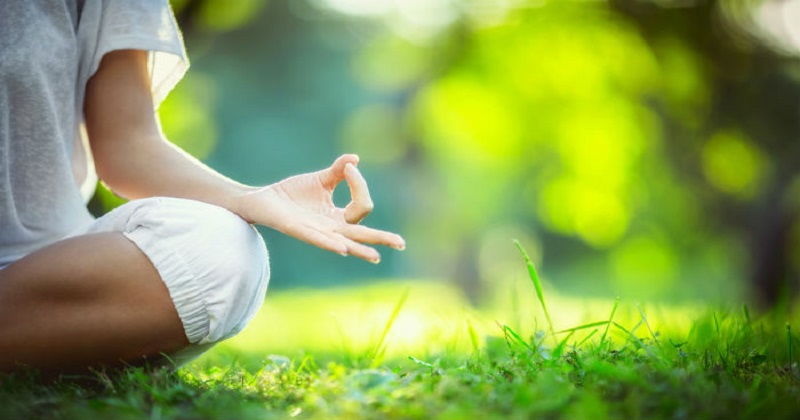
Yoga is a method of learning and comprehending spiritual India. Yoga is also related to Indian culture and tradition. Yoga means ‘to connect’ in Sanskrit and describes a technique to live a healthy existence. Through meditation, the mind is disciplined in yoga, and the body is aligned and strong. According to yoga, the nerve system of the body is what impacts our health. Daily yoga purifies the neurological system, keeping our bodies healthy and powerful.
Yoga’s origins are said to be as old as human civilisation. However, there is no substantial evidence to back up this claim. Despite intensive inquiry, no clear discoveries about the origins of yoga have been discovered. Yoga is thought to have started in India some 5,000 years ago. Many Western scholars formerly believed that yoga originated around the Buddha’s time (about 500 B.C.) rather than 5,000 years ago. Amazing discoveries were made during the excavation of the Indus Valley civilization, the world’s oldest known civilization. Soapstone seals from that time period have been discovered carved with images resembling a yogi seated in a yoga-like stance. Originally, yoga started for the betterment of a community rather than the self.
While yoga asanas are extremely powerful and beneficial, yoga is more than just asanas or positions. It is also not a transitory current craze that has evolved over the previous few decades. It actually dates back millennia! Yes, as amazing as it may sound, yoga dates back to BC times. So it’s no surprise that so many people all throughout the world are drawn to such a time-honored activity.
What is yoga?
Yoga is derived from the Sanskrit word yuj, which meaning ‘to connect’ or ‘to merge.’ This connection is more than just your nose touching your knees as you bend to touch your toes! The connection in question is that between your mind and your body. You are blending in with your surroundings and nature. Finally, your particular awareness merges with the universal mind.
Yoga from India
The Vedic Period, according to the Vedas, is the origin of yoga in India. Vedic yoga, or ancient yoga, is the oldest known yogic doctrine and may be found in four Vedas: Rig Veda, Yajur Veda, Sama Veda, and Atharva Veda. Vedic yoga rituals and ceremonies aim to overcome mental constraints. As a result, Vedic yoga was intimately linked with people’s ceremonial lives during the time. Yoga was regarded as a means of connecting with the invisible world, and it centered on a sacrifice — self-sacrifice. Sacrificers used to focus on one item for extended periods of time, comparable to meditation. As a result, Vedic yoga is regarded as a forerunner of yoga. Thereby, Vedic yoga is considered a root of yoga. A master of Vedic yoga was known as a ‘seer’ – Rishi in Sanskrit.
Pre-classical Yoga
Then came the time of pre-classical yoga, which was distinguished by the composition of Upanishads. This period, which lasted until the second century A.D., spanned around 2,000 years. There are several types of pre-classical yoga, but the majority of the early yoga was related to Vedic yoga. Upanishads describe Vedic teachings as well as three themes – the ultimate truth (brahman), the transcendental self (atman), and the link between the two – and hence yoga arrived with the Upanishads.
One of the major yoga scriptures of this time is the Bhagavad-Gîtâ (Lord’s Song), a highly important sacred book of Hindus. Yoga was also included in the Râmâyana and the Mahâbhârata (which include The Bhagavad-Gita). Pre-classical yoga includes various profound meditation techniques for transcending the body and mind and connecting with heavenly energies in order to know one’s true nature. Yoga of this time is linked to both Hinduism and Buddhism, since Lord Buddha began preaching the value of meditation in the sixth century B.C.
Classical Yoga
Patanjali’s Yoga Sutra, which standardised Classical Yoga, was written about the second century, marking the beginning of the classical period of yoga. The word sutra means ‘thread,’ and it refers to the thread of memory in which Patanjali pupils keep Patanjali’s knowledge and wisdom. The eightfold path of Yoga is made up of 195 aphorisms or sutras, which include yama (ethical ideals), niyama (personal purity), asanas (physical exercises), pratyahara (meditation preparation), dharana (concentration), dhyana (meditation), and samadhi (ecstasy). Patanjali held that each person is composed of matter (prakriti) and spirit (purusha). These two may be separated via yoga, and spirit can be regenerated in its purest form.
Post-classical Yoga
The post-classical phase of yoga emphasised the present. It includes all of the yoga schools that arose following Patanjali’s yoga-sutra. Post-classical yoga, as opposed to Classical yoga, focuses on the ultimate oneness of all things. During this time, yoga took an unexpected turn as the body’s hidden potential was investigated. Yoga gurus devised a series of techniques to revitalise the body. It resulted in the development of hatha-yoga, an amateur form of modern-day yoga.
Modern yoga
Modern yoga is thought to have started with the Parliament of Religions in Chicago in 1893. There, the youthful Swami Vivekananda made an indelible influence on the American people. He then drew yoga and Vedanta pupils. After him, another well-known yoga instructor was Paramahansa Yogananda. Swami Ramdev of the Patanjali Yoga Peeth Trust has now introduced yoga to every home in India and overseas.
Gujarat Chief Minister Narendra Modi recently inaugurated Lakulish Yoga University in Ahmedabad, Gujarat. It is a self-funded private university established by the Life Mission Trust in Surendranagar. After finishing their courses in Ashtang Yoga, Karma, Knowledge, Bhakti Yoga, philosophy, psychology, anatomy, ayurveda, and naturopathy, students will be given a three-year degree.
Yoga is an important aspect of Indian culture, and it has evolved throughout history. So, become a part of authentic India by learning yoga for the benefit of both the body and the spirit.

Post Your Comments